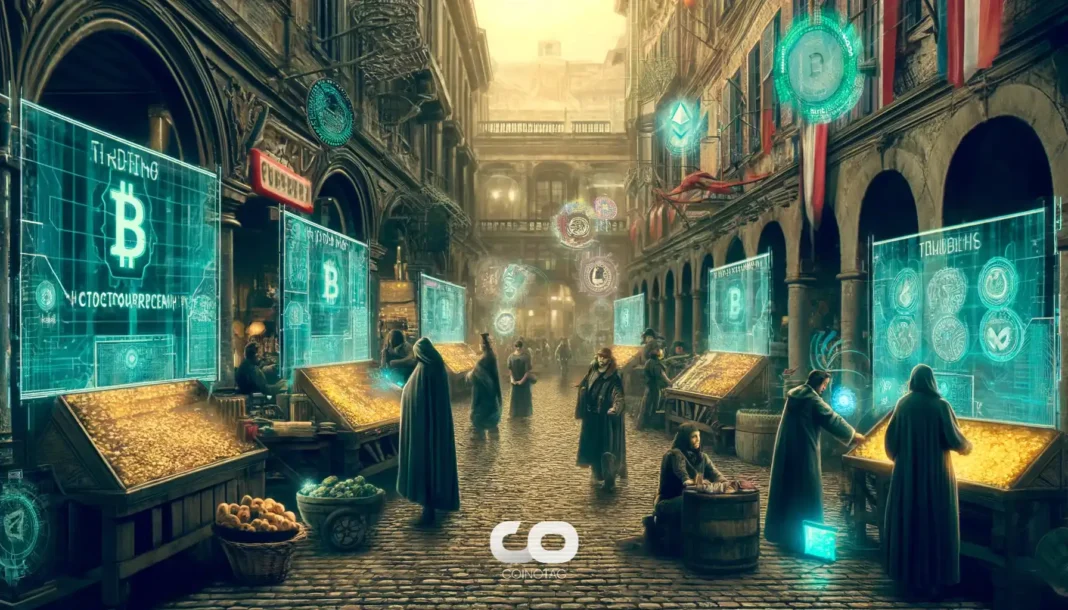-
The rapid expansion of Real World Assets (RWA) tokenization is reshaping the intersection of traditional finance and blockchain technology, driving unprecedented growth in the crypto market.
-
This surge is powered by innovative applications such as tokenized private credit and U.S. Treasury debt, which are enhancing liquidity and accessibility for investors worldwide.
-
According to Binance Research, as cited by Cointelegraph, the RWA tokenization market capitalization has soared over 260% year-to-date, reaching approximately $23 billion.
Explore how Real World Assets tokenization is transforming finance with over 260% market growth, driven by private credit and U.S. Treasury tokens.
Explosive Growth in Real World Assets Tokenization Market
The Real World Assets tokenization market has experienced a remarkable surge in 2024, with market capitalization expanding from around $8.6 billion at the start of the year to nearly $23 billion today. This 260% year-to-date growth reflects a robust appetite from both crypto-native investors and traditional financial institutions seeking to leverage blockchain’s efficiency. Tokenization enables the fractionalization of high-value assets, unlocking liquidity that was previously inaccessible in conventional markets. This transformation is not merely digitization; it represents a fundamental shift in how assets are owned, traded, and managed globally.
Key Drivers Behind the RWA Tokenization Boom
Two primary factors are propelling the rapid adoption of RWA tokenization. First, tokenized private credit offers new avenues for financing by converting private debt into tradable blockchain tokens, increasing accessibility for investors and businesses alike. Second, tokenized U.S. Treasury debt bridges traditional safe-haven assets with decentralized finance (DeFi), facilitating faster settlements and reducing transaction costs. These drivers address longstanding inefficiencies in asset markets, such as illiquidity and slow settlement, while expanding investment opportunities across global markets.
Benefits of Tokenized Real World Assets for Investors and Asset Owners
Tokenized assets provide a suite of advantages that enhance both investment potential and asset management:
- Increased Liquidity: Assets like real estate and fine art become tradable in smaller units, enabling easier entry and exit.
- Fractional Ownership: Investors can acquire portions of expensive assets, lowering capital barriers.
- Transparency and Security: Blockchain’s immutable ledger ensures clear ownership records and reduces fraud risks.
- Operational Efficiency: Smart contracts automate processes such as dividend payments and royalty distributions, minimizing administrative burdens.
- Global Accessibility: Investors worldwide gain access to asset classes previously limited by geography or accreditation.
- Cost Reduction: Eliminating intermediaries lowers transaction fees and expedites transfers.
- 24/7 Market Access: Tokenized assets can be traded continuously, unlike traditional markets with fixed hours.
Challenges and Considerations in RWA Tokenization
Despite its promise, RWA tokenization faces several hurdles that must be addressed for sustainable growth. Regulatory frameworks remain fragmented and evolving, creating uncertainty for market participants. Establishing clear legal ownership through tokens requires robust agreements and compliance measures. Additionally, accurate asset valuation and secure data integration via oracles are critical to maintaining trust. Custody solutions must safeguard both digital tokens and underlying physical assets, while interoperability between blockchain platforms is essential for liquidity. Educating investors and mitigating smart contract vulnerabilities are also vital to fostering confidence and adoption.
Real-World Applications and Sectoral Adoption of Tokenized Assets
RWA tokenization is gaining traction across diverse sectors, demonstrating its versatility:
- Real Estate: Fractional ownership models enable broader participation in property markets worldwide.
- Equities and Bonds: Digital representations streamline settlement and reduce operational costs.
- Commodities: Tokenized gold, silver, and oil increase accessibility and divisibility.
- Art and Collectibles: High-value items can be co-owned, unlocking liquidity for traditionally illiquid assets.
- Intellectual Property: Royalties and ownership stakes in patents and creative works are being tokenized to facilitate transparent revenue sharing.
Institutional Adoption and Regulatory Outlook Shaping the Future
The future trajectory of RWA tokenization hinges on regulatory clarity and institutional engagement. Financial institutions, asset managers, and banks are increasingly piloting tokenization projects, bringing capital and credibility to the ecosystem. Regulatory bodies worldwide are beginning to formulate guidelines that balance innovation with investor protection, which is critical for mainstream adoption. This evolving landscape promises to integrate Real World Assets more deeply into decentralized finance, enhancing market stability and unlocking new yield opportunities backed by tangible assets.
Conclusion
The surge in Real World Assets tokenization marks a pivotal evolution in financial markets, blending the strengths of blockchain technology with traditional asset classes. With over 260% growth year-to-date, driven by tokenized private credit and U.S. Treasury debt, this sector is poised for continued expansion. While regulatory and technical challenges remain, the increasing involvement of institutional players and ongoing innovation signal a transformative future. Tokenized assets are set to become a foundational element of the global financial ecosystem, bridging conventional finance and decentralized markets to unlock unprecedented value.





